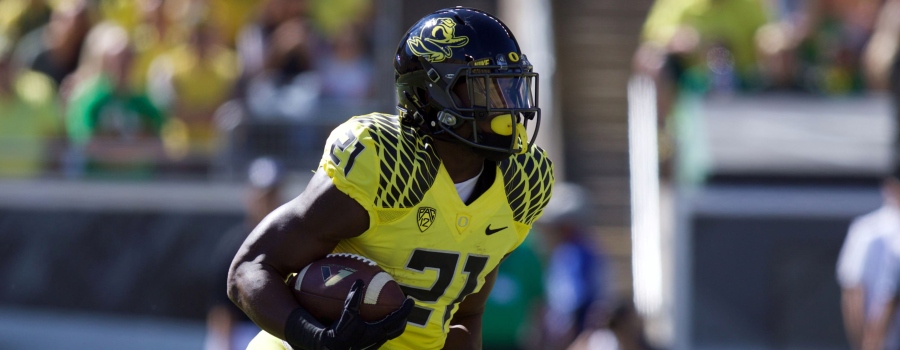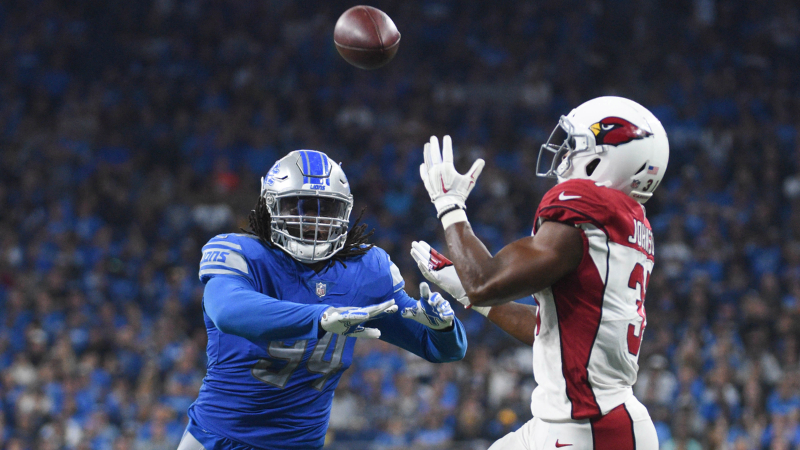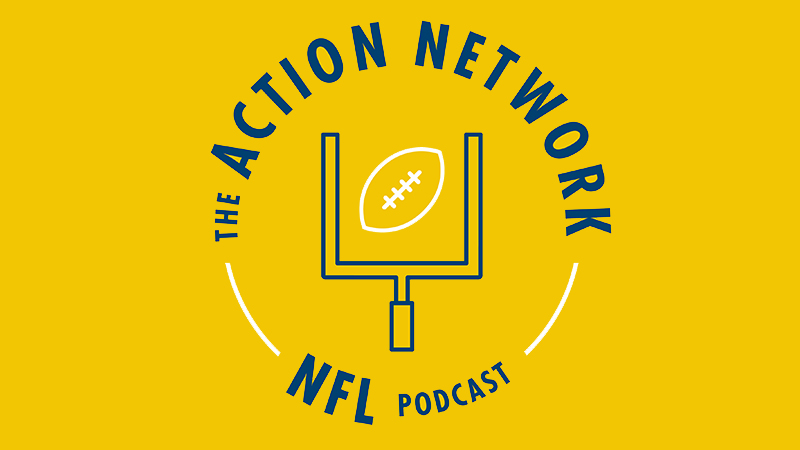Since 2012, 19 rookie running backs have finished the fantasy season as an RB2 or better. Of those 19 RBs, 12 of them finished as RB1s by season’s end. We know there will be rookies who tear it up in 2018, but considering their uncertainty without any NFL data, redraft and DFS markets could be underestimating some of their potential value this upcoming season.
There are some rookies who are pretty much “can’t-miss” fantasy prospects each year – guys such as Leonard Fournette and Kareem Hunt last year, or Ezekiel Elliott and Todd Gurley in previous seasons. This year’s “can’t-miss” guy is, of course, Saquon Barkley.
The problem is that the market is already all over Barkley. His ADP is currently RB5 (as it should be), so I’m not even going to focus on him in this analysis. What we really want to know is which RBs are being under-drafted based on their potential for opportunity in 2018.
I dove into historical opportunity stats for current NFL play-callers, and I’ve highlighted six rookie RBs who could be in line for a significant workload in 2018 based on their coaching situations. All six of these rookies could be RB2s by the end of the 2018 season, but not all six are being drafted based on that upside. Let’s start with undervalued rookies, and then we’ll get to those with fair value or those who are being over-drafted.
Undervalued Rookie RBs
Royce Freeman (Current ADP: RB27)
Freeman may have the greatest potential volume of opportunities among all rookie RBs not named Saquon Barkley. But at the time of this writing, he’s being drafted after Derrius Guice, Ronald Jones, Sony Michel, and Rashaad Penny in 2018 redrafts. Why should he be drafted higher than his current RB27 spot?
Frankly, the biggest reason to be bullish on Freeman is because Denver decided to renew Bill Musgrave’s contract for 2018. Since 2012, Musgrave has produced consistently great RB1s:
Musgrave has a track record of using RB1s as workhorse backs, with limited work available for other RBs in the backfield. His backfields have averaged 11.2 TDs per season, and most of the red-zone opportunities have gone to RB1s – not to specialized backs. Additionally, Musgrave has offered his backfields 427.6 average opportunities per season, heavily weighted in touches for RB1s.
Last year around this time, many people were projecting C.J. Anderson to potentially lose his job to Devontae Booker. There was a prevailing sentiment that Booker might win the job, or at minimum that he and Anderson would split work during the year. However, Anderson did win the job, and he went on to amass 273 opportunities in 2018, which ranked 11th in the NFL.
Freeman is currently projected by most analysts to start the season at RB1 for the Broncos, or at least to earn the starting job early on. The upside is very clear: If Freeman is given the keys to the Broncos offense, he may be in line to receive the highest volume of opportunities of any RB in this list.
What about his competition for the starting job? Fortunately for him, Booker and De’Angelo Henderson aren’t exactly lighting the world on fire, and the other guy in the backfield, David Williams, was a seventh-round pick this summer. The Broncos invested an early third-round pick in Freeman for a reason: They want him to be the guy.
Furthermore, with Denver’s addition of Case Keenum to the roster, the Broncos offense is going to improve in 2018. Running back production is highly correlated with QB production, which bodes well for Freeman this year.
In-house oddsmaker Sean Koerner also believes Freeman is undervalued, even based on his median projection. Koerner currently has Freeman ranked as his 24th-best RB in 2018. Considering Freeman’s ADP is currently RB27 off the board, Freeman is being under-drafted. In redrafts and early on in DFS, take the high-upside value.
Nick Chubb (Current ADP: RB37)
Chubb is the only RB on this list projected to start the season as RB2 on his team’s depth chart. Why is he intriguing then? Because if Chubb supplants Carlos Hyde as the RB1 in Cleveland midseason, his volume of opportunity is potentially huge with Todd Haley. Take a look at RB1s under Haley since 2012:
*Bell played only 13 games in 2013 due to injury.
**Bell played only 12 games in 2016 due to suspension.
Even if we assume much of that volume is due to the excellence of Le’Veon Bell, we still have to reckon with DeAngelo Williams’ RB4 performance in 2015 and Jonathan Dwyer’s 13.92 opportunities per game in 2012.
The fact is, we’re not certain how Haley will adapt to life without Le’Veon, but his previous experience with Dwyer and Williams suggests his perseverance in emphasizing the run. His backfields have averaged 397.5 opportunities per season, which isn’t great (18th among active coaches). That said, he’s allocated those 397.5 opportunities nearly exclusively to lead backs. He has little-to-no track record of utilizing RB committees.
Of course, Chubb still has Hyde in front of him for lead-back work, and Duke Johnson is also looming. However, Hyde has never rushed for 1,000 yards in a season, and Johnson’s role in the offense is going to be somewhat handicapped by the presence of Jarvis Landry. Chubb could very well earn the starting job at some point this season, especially since the Browns burned an early second-round pick to get him.
It’s definitely not fun to grab RBs in middle rounds just to sit on your bench, but the upside with Chubb is very enticing. At RB37 off the board, Chubb could provide great value based on ADP. To be fair, he’s a purely upside play — but season-long fantasy is won and lost later in the season in the playoffs. Chubb could be 2018’s version of Alex Collins‘ ascension in the second half of the 2017 season.
>> Sign up for The Action Network’s daily newsletter to get the smartest NFL conversation delivered into your inbox each morning.
Rookie RBs with Fair Value
Sony Michel (Current ADP: RB25)
Josh McDaniels’ RB-by-committee approach in New England has produced the most productive backfields in the NFL since 2012. His backfields have averaged 506.0 opportunities, 21.3 total TDs and 367.5 fantasy points per season, which all rank first among active NFL coaches.
All that said, McDaniels distributes this production among three to four different RBs per season, resulting in plenty of hair-pulling and gnashing of teeth by fantasy owners. This year’s Patriots team returns James White, Rex Burkhead, Mike Gillislee and Brandon Bolden, along with new addition Jeremy Hill. Bolden, Gillislee and Hill are competing for the RB4 position, and the Patriots may end up cutting two of them before the regular season begins.
Where does this leave Michel exactly? The Patriots uncharacteristically spent a first-round pick to acquire him, which suggests that they have major plans to utilize him in the running game in 2018. And let’s say Michel does earn the RB1 spot in the Patriots backfield. Here’s how RB1s have performed under McDaniels since 2012:
*Blount played only 12 games in 2015 due to injury and suspension.
Despite McDaniels’ committee usage, Patriots RB1s have still earned fantasy RB1 status three times in six years, and Patriots RB1s have dropped to no worse than FLEX status each year.
However, McDaniels’ RBs have hit 250 total opportunities only twice in those same six years: Stevan Ridley in 2012 and LeGarrette Blount in 2016. In 2012, Ridley earned 304 opportunities, in part because Shane Vereen was ineffective and Bolden was injured. In 2016, Blount earned 307 opportunities, in part because Dion Lewis was injured half the season. Both Ridley and Blount finished as top-10 RBs in those years.
Realistically, White and Burkhead will likely handicap Michel’s touches, barring injuries. In just 10 games last season, Burkhead earned 100 opportunities and eight TDs as the Patriots’ RB2.
However, Michel demonstrated his ability to catch the ball out of the backfield at Georgia, which may earn him more third-down snaps than expected, at the possible expense of White. Furthermore, Patriots RB1s have historically averaged 9.67 TDs per season, so concerns over Gillislee’s or Hill’s goal-line touches are likely overblown.
Unlike other RBs on this list, if Michel happens to slip to RB2 in New England’s depth chart, that’s still OK – McDaniels’ RB2s have averaged around 100 fantasy points per season since 2012. Because of this, Michel has a very high floor, but his path to fantasy RB2 status isn’t a guarantee.
According to Koerner’s rookie RB projections, Michel ranks behind Freeman, Guice, Penny and Jones in projected touches for 2018. Michel is Koerner’s 27th RB for 2018, and he’s the public’s RB25 based on ADP. Altogether, Michel’s current ADP valuation seems reasonably sharp; target him as a high-upside FLEX option rather than as your RB2.
Rashaad Penny (Current ADP: RB22)
Penny is perhaps the safest bet among the rookies in this list, but it’s definitely a good news/bad news situation.
The Good News
Brian Schottenheimer, the Seahawks’ new OC, has a strong history of favoring workhorse RB1s rather than using committees. Based on Schottenheimer’s history, Penny is likely to hit 250-plus opportunities in 2018 (if he remains healthy for a full 16 games). Schottenheimer also eschews the usage of “goal-line” backs, preferring to stick with RB1s in goal-line situations.
Penny’s competition in Seattle is also pretty advantageous. The Seahawks return Chris Carson, Mike Davis, and C.J. Prosise, and none of those guys poses a meaningful threat to Penny’s touches. As a result, most analysts comfortably project Penny as the Seahawks’ RB1 to start the season.
More good news: In Schottenheimer’s last stint in the NFL as an offensive coordinator with the St. Louis Rams from 2012-2014, his RB1s performed pretty well from a fantasy perspective:
The Bad News
Schottenheimer ranks dead last among active NFL coaches in RB touchdowns per season, averaging only 7.3. He also ranks a dismal 21st among active coaches with just 384.0 average backfield opportunities per season.
Schottenheimer’s old-school, inside-the-tackles play-calling style has historically resulted in inefficient numbers for RBs, so don’t expect Penny’s box scores to always look pretty. Also, in the event that Schottenheimer unexpectedly employs a backfield timeshare, his low historical average for RB opportunities becomes a huge problem for Penny.
The Bottom Line
Penny seems like a pretty safe bet in 2018, but “safe” is also somewhat synonymous with “limited” here. He’s very likely to produce at least FLEX value for owners this year, but his ceiling might be lower than that of other players drafted around his current ADP. He’s a situational pickup in redrafts: If you want to hedge some risk after your first couple of picks, Penny’s the perfect selection. If you need a potential home-run hitter, look elsewhere.
Koerner’s median projection for Penny has him at RB20 for 2018. At RB22 in current ADP, he’s probably being drafted fairly right now, but the real value play is to draft him if he slips. The lack of truly high upside isn’t worth reaching for.
Overvalued Rookie RBs
Derrius Guice (Current ADP: RB19)
People are falling in love with Guice this offseason, and it’s easy to understand why. At 225 pounds with a 4.49 40-yard dash, his combination of size and speed is tantalizing. Plus, the other RBs in the Redskins backfield have been supremely disappointing. (I’m looking at you, Samaje Perine and Rob Kelley.) Guice’s second-round selection suggests that the Redskins are trying to revamp their running game in 2018 by featuring Guice strongly in their offensive scheme.
Let’s take a look at how RB1s have fared under Jay Gruden since 2012:
*Chris Thompson played only 10 games in 2017 due to injury.
Those numbers are a little difficult to digest. On the one hand, Gruden has taken some lackluster RBs and made them fantasy-relevant on several occasions. BenJarvus Green-Ellis? Rob Kelley? Really?
On the other hand, the last three years have been disappointing. Furthermore, RB1 opportunities have been pretty low, likely due to Gruden’s lack of faith in the backfield talent at his disposal.
Altogether, Gruden’s backfields have averaged 412.67 opportunities per season (14th among active coaches) and 11.0 total TDs (12th among active coaches). Those averages aren’t bad by any stretch, but they don’t suggest huge potential volume, either.
Moreover, Gruden has historically preferred to utilize at least two RBs when possible, and Chris Thompson’s receiving role in the Washington offense is well-established. On top of that, Guice’s college receiving production is rather lackluster. It’s fair to assume Guice will cede the vast majority of air targets to Thompson in 2018.
The best example in Gruden’s career when he utilized two backs in a hard split between carries and targets would be the 2013 season with the Bengals. That year, Gruden had BenJarvus Green-Ellis and Giovani Bernard split touches and TDs almost evenly. Green-Ellis and Bernard finished the season as RB31 and RB16, respectively.
What does all this mean for Guice in 2018? With the presence of Thompson as an established figure in the offense, and with Perine and Kelley likely to poach some touches here or there, Guice is likely to fall short of 250 total opportunities this season (see Part 1 for what a RB needs to hit RB1, RB2, and FLEX value). Historically, this projects him more as a FLEX option than a fantasy RB2.
His talent suggests he could be better than that, and he’s definitely better than RBs Gruden has worked with before. Nonetheless, his ceiling isn’t as high as people may think. Koerner agrees: He has Guice as his RB23 in 2018. At RB19 off the board based on current ADP, Guice is being over-drafted by the public currently.
Ronald Jones (Current ADP: RB26)
Jones is in a confusing spot with Tampa Bay, as head coach Dirk Koetter has a very weird history with RBs. He ranks eighth in the NFL in RB opportunities per season at 437.67 and 10th in RB touchdowns per season at 11.5. He’s achieved those numbers despite falling victim to a disproportionate number of RB injuries and suspensions in the last six years.
Lead backs in Koetter’s offense have always received more than 250 opportunities (barring injury), and, when healthy, Doug Martin paced 300-plus opportunities per season. Koetter’s history underlies an offensive philosophy that prioritizes giving RB1s profound volume.
Despite all these positives related to Koetter’s RB usage, his RB1s have had very disappointing fantasy seasons over the last six years. Take a look:
*Rodgers played in only 10 games due to injury in 2016.
Koetter has had to deal with multiple injuries in his backfield over the years, but those numbers are seriously ugly. It’s hard to look at his history and feel optimistic about the future.
Here’s the good news for Jones: His competition for lead back duties include Peyton Barber, Charles Sims and Jacquizz Rodgers. None of those guys is likely to win the job outright. Barber had his opportunity last year, and he was very underwhelming. Sims and Rodgers have both been relegated to third-down and receiving opportunities over the last several years.
Even if Jones wins the job handily, some healthy skepticism and temperance are probably appropriate considering Koetter’s strange RB history. Plus, Jameis Winston’s four-game suspension doesn’t help Jones’ rapport in the offense. Tampa Bay is sort of a mess right now.
Consider Jones a high-risk/high-upside play in 2018. At RB26 off the board, the public seems to be targeting him as a FLEX option, and that approach feels appropriate. Koerner has Jones ranked as his RB29 in 2018. Don’t reach for Jones — but if he falls beyond the seventh round, he’s still a worthwhile FLEX play with upside.
No Love for Kerryon Johnson?
I like Johnson – as my friend (a big Auburn fan) remarked to me once, he runs like he’s going to die tomorrow. But the Detroit Lions are still one of the worst running teams in the NFL, and Jim Bob Cooter is still the OC. In a crowded backfield with Theo Riddick, Ameer Abdullah and LeGarrette Blount, there likely won’t be enough opportunities for Johnson to justify the investment. Koerner is slightly higher on him, ranking him as the 41st RB in 2018.
In Part 3 of my series on historical opportunity stats, I’ll be focusing on the deep class of running backs competing for RB2 status, and I’ll discuss which backs have the highest floor based on opportunity.
Credit: © Scott Olmos-USA TODAY Sports







